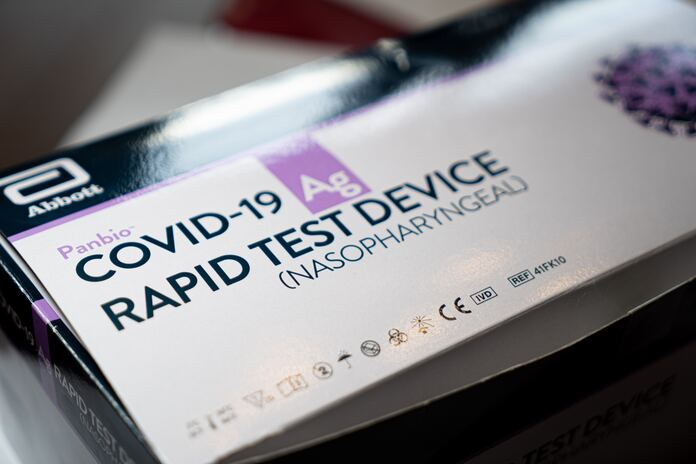Abbott Laboratories (NYSE:ABT) is strategically expanding its global presence to meet the growing demand for advanced medical technologies.
Over the past year, Abbott stock has seen a modest decline of 0.9%, while the industry has risen by 1.4%, and the S&P 500 composite has surged by 19.2%.
The company’s Core Diagnostics segment is gaining market share, particularly in the United States and Europe, following the end of the public health emergency. However, challenges such as currency exchange rate fluctuations and the continued decline in COVID-related sales are significantly impacting its growth trajectory.
With a market capitalization of $169.15 billion, Abbott anticipates a 5.1% growth over the next five years, aiming to sustain its strong performance. Abbott has consistently beaten earnings estimates in the last four quarters, with an average surprise of 12.44%.
Let’s explore the key factors influencing Abbott’s performance.
Key Factors Driving Growth
- Strong Prospects in Core Diagnostics: Abbott is bolstering its Diagnostics business, which accounted for nearly 30% of the company’s total revenues in the second quarter of 2023. While demand for Abbott’s rapid COVID-19 diagnostic tests has waned, the company is experiencing increased demand for routine diagnostic testing in the United States and Europe. In the U.S., Abbott is witnessing robust growth in blood transfusion testing, bouncing back from reduced plasma donations during the pandemic.
- Sales Recovery in Nutrition: After the setback related to the recall and production halt of certain infant formula products in Sturgis, MI, last year, Abbott’s Nutrition business is showing signs of recovery in 2023. As per the latest update from the second-quarter earnings call, the company has made significant progress in ramping up manufacturing production. It has reclaimed approximately 75% of the market share in the infant formula business.
- Stable Liquidity Position: With a total debt (including the current portion) of $16.85 billion as of June 30, 2023, Abbott appears to be in a comfortable liquidity position. The company held $8.16 billion in cash and cash equivalents at the end of the second quarter of 2023. Although the total debt in the second quarter exceeded the cash level, Abbott’s short-term payable debt was significantly lower than its short-term cash balance. Additionally, Abbott has increased its quarterly dividend from 47 cents to 51 cents per share on its common shares in each of the first two quarters of 2023, reflecting an 8.5% hike.
Challenges Ahead
- Declining COVID Testing: Since late 2022, following the official end of the public health emergency in May, Abbott has faced a sustained decline in demand for COVID testing. Rapid Diagnostics sales for Abbott dropped by 67.9% in the first half of 2023 compared to the same period last year due to reduced demand for COVID-19 tests.
- Foreign Exchange Impact: Abbott is susceptible to fluctuations in foreign exchange rates, as a significant portion of its revenues comes from outside the United States. The strengthening of the euro and other developed market currencies has consistently hindered the company’s international performance. In the second quarter, foreign exchange had an adverse year-over-year impact of 2.5% on sales.
Estimate Trends
Over the past 90 days, the Consensus Estimate for Abbott’s earnings has remained steady at $4.40.
The Consensus Estimate for the company’s 2023 revenues stands at $39.77 billion, indicating an 8.9% decline compared to the previous year’s reported figure.
Abbott Stock
In conclusion, while Abbott faces challenges due to declining COVID-related demand and forex fluctuations, it continues to showcase resilience and strength in its core businesses, particularly in diagnostics and nutrition. Investors may consider Abbott stock for its potential long-term growth, backed by its strategic initiatives, stable financial position, and proven track record.
Featured Image: Unsplash @ Mika Baumeister















